Featuring Amargosa Hotel, Death Valley Junction & Furnace Creek Inn, Death Valley – 1931

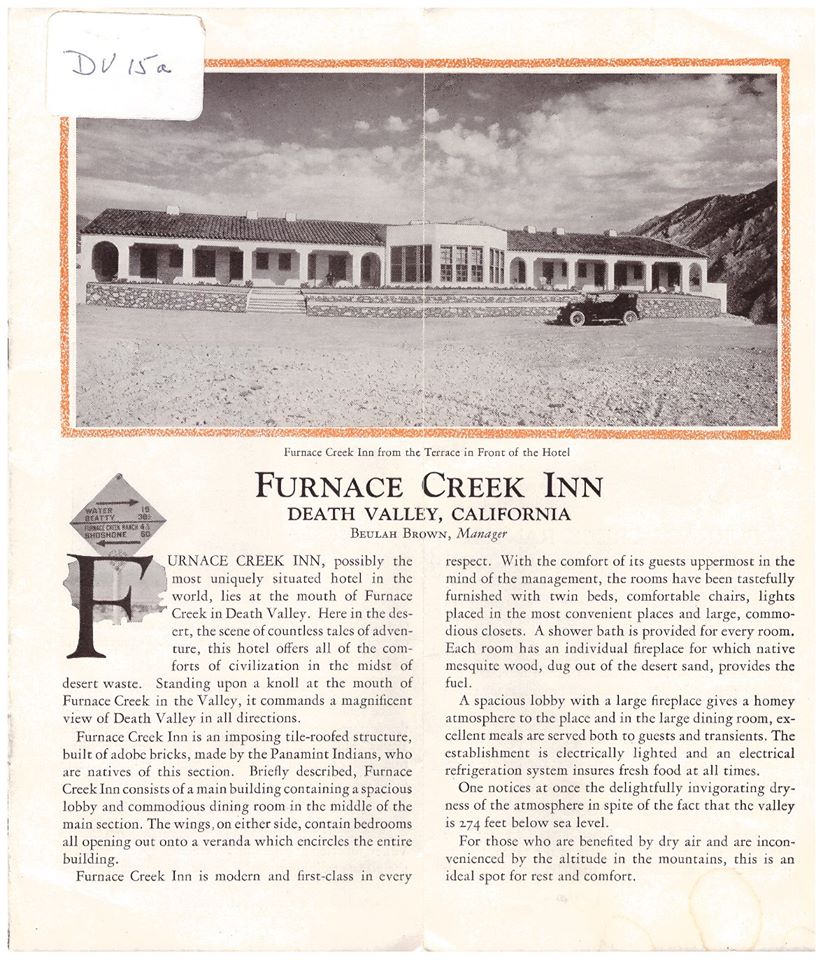
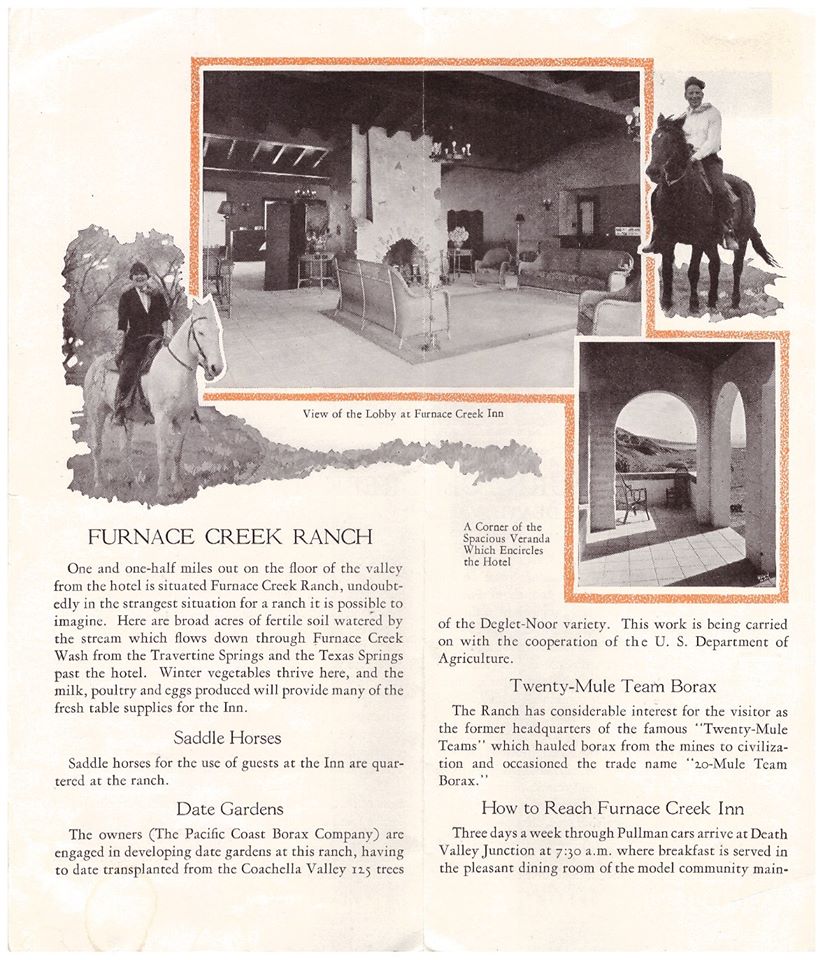
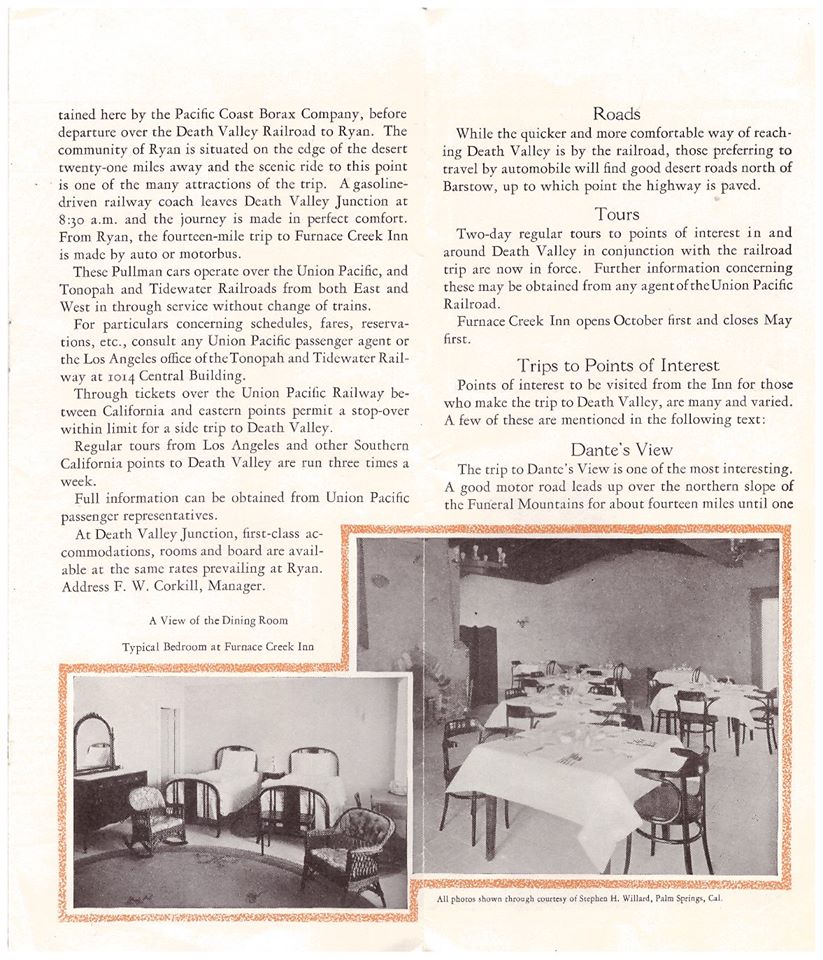

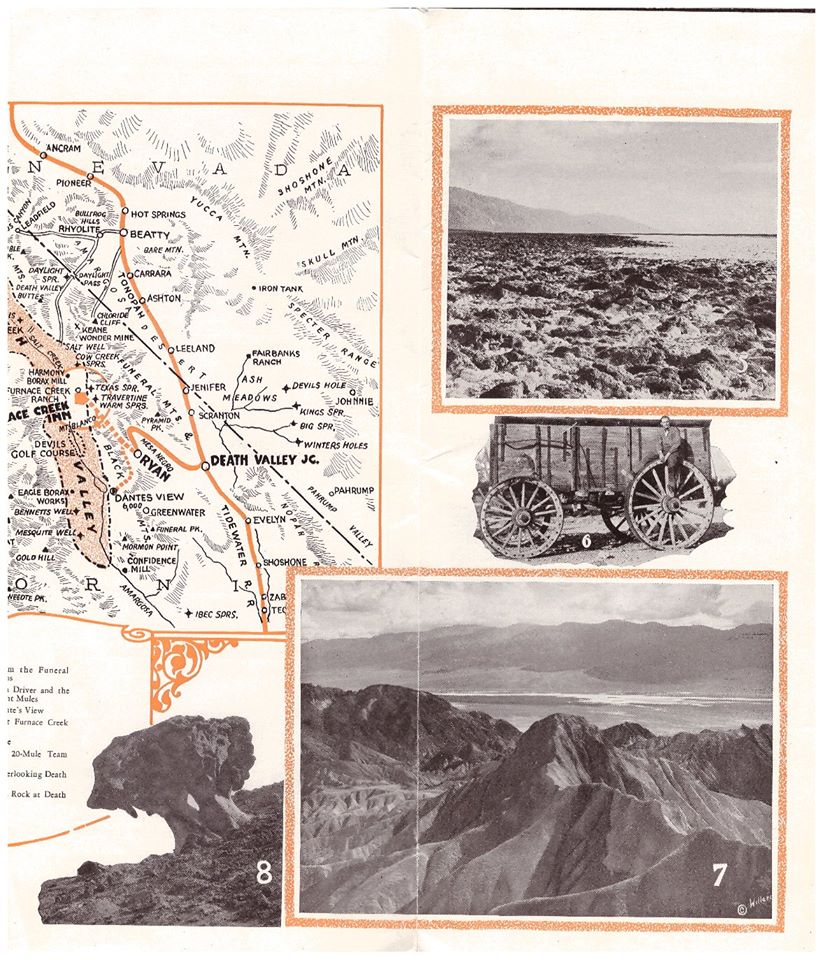

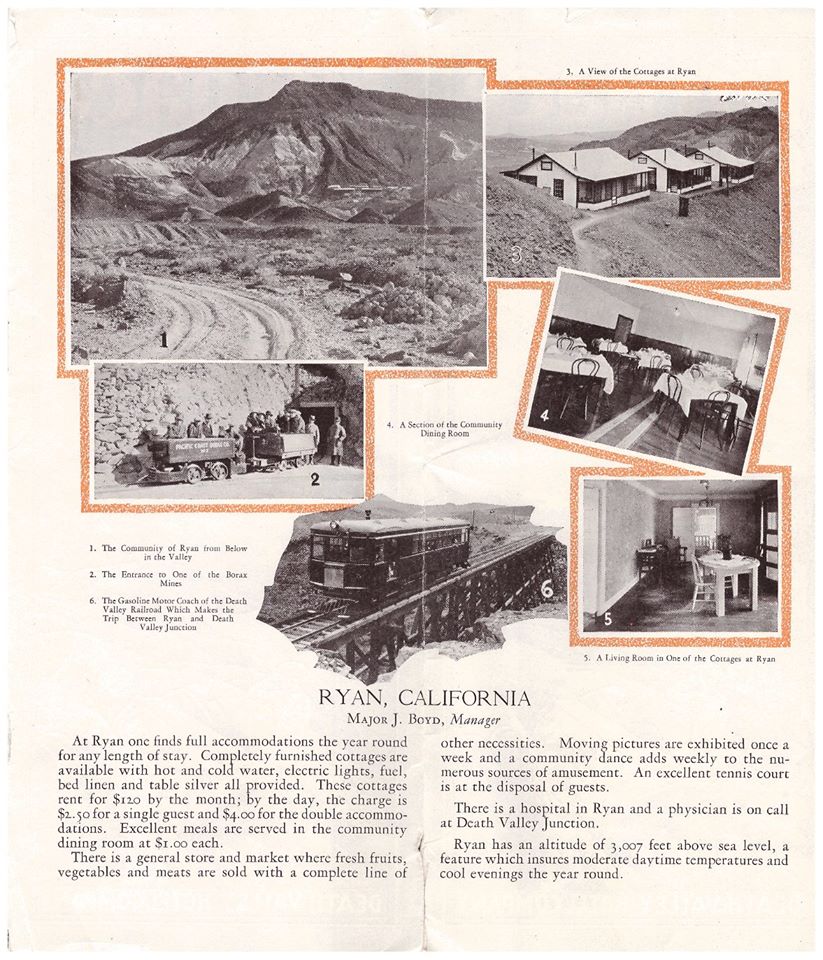


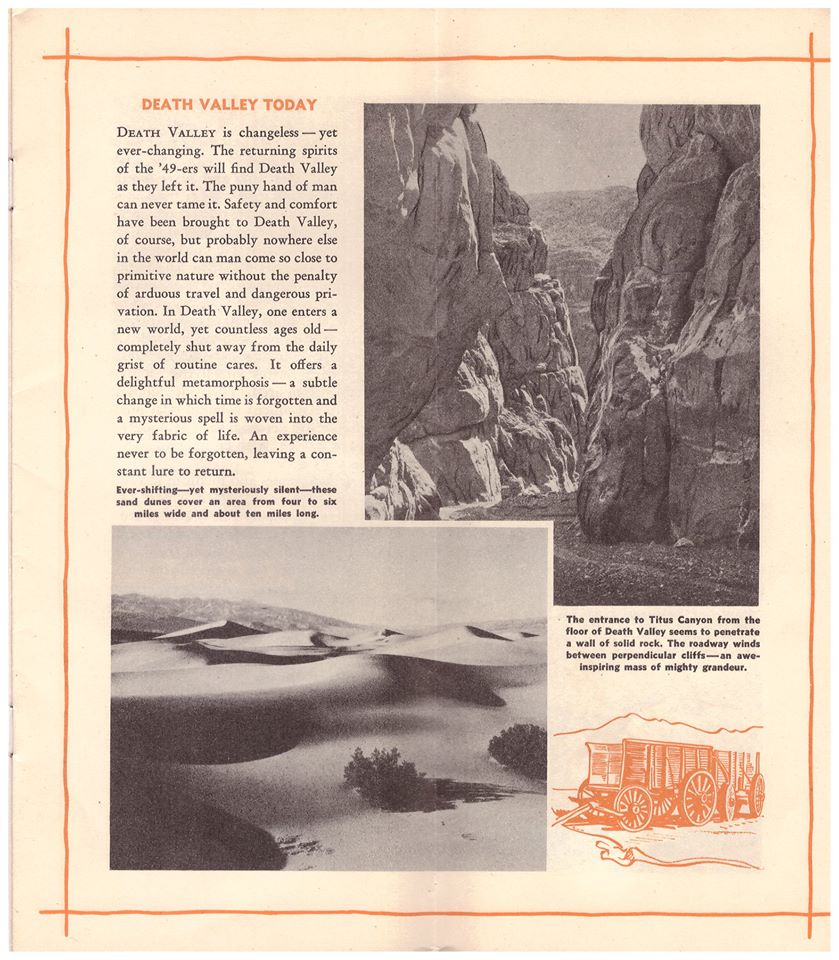
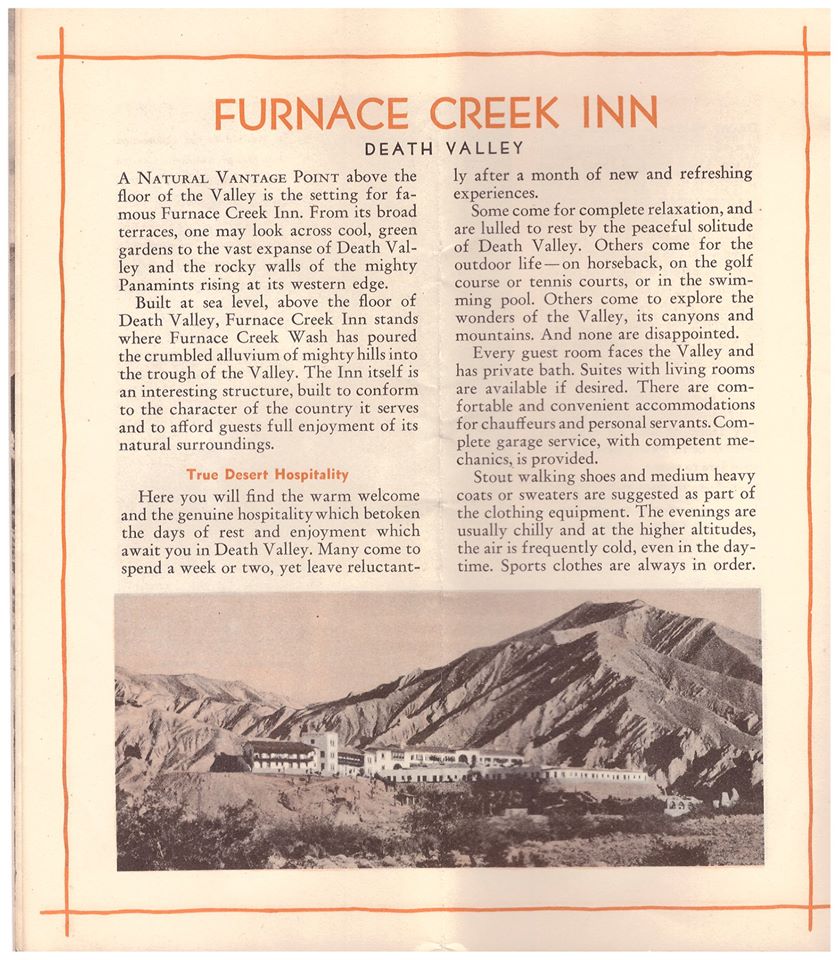
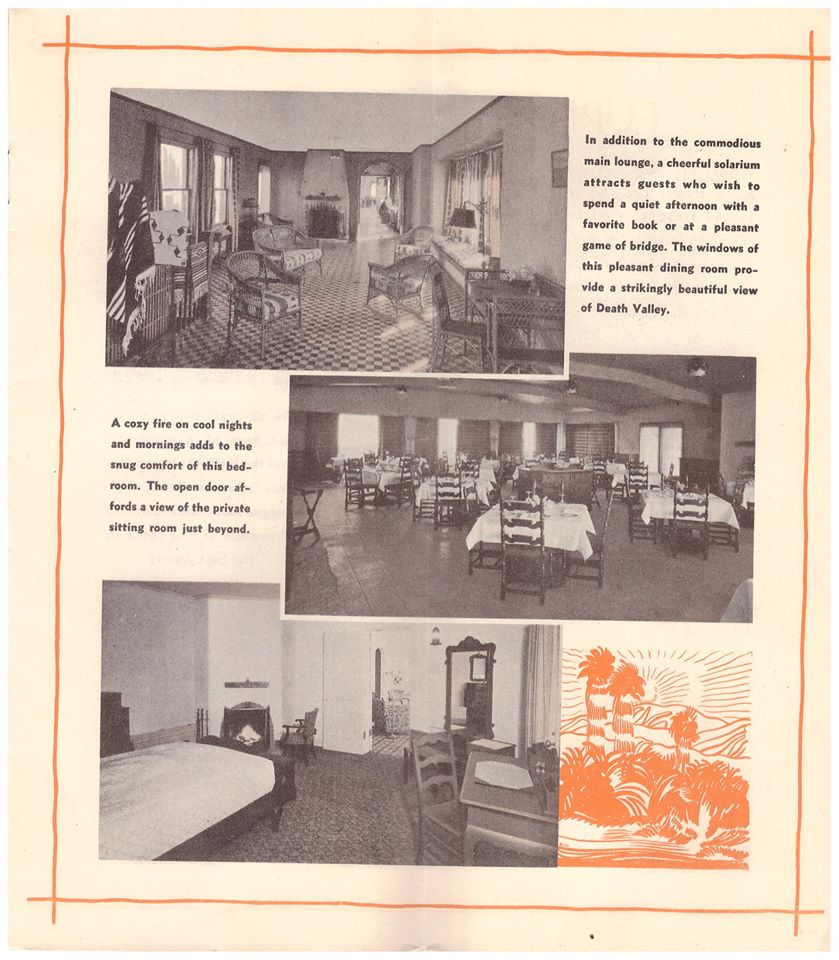

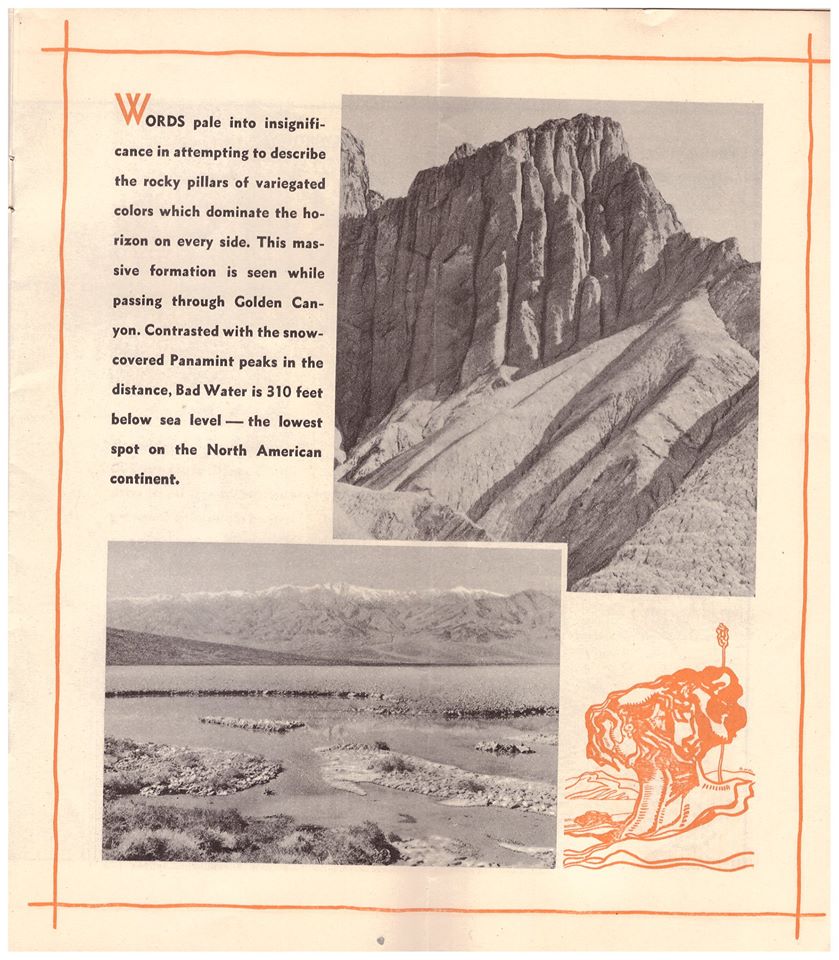
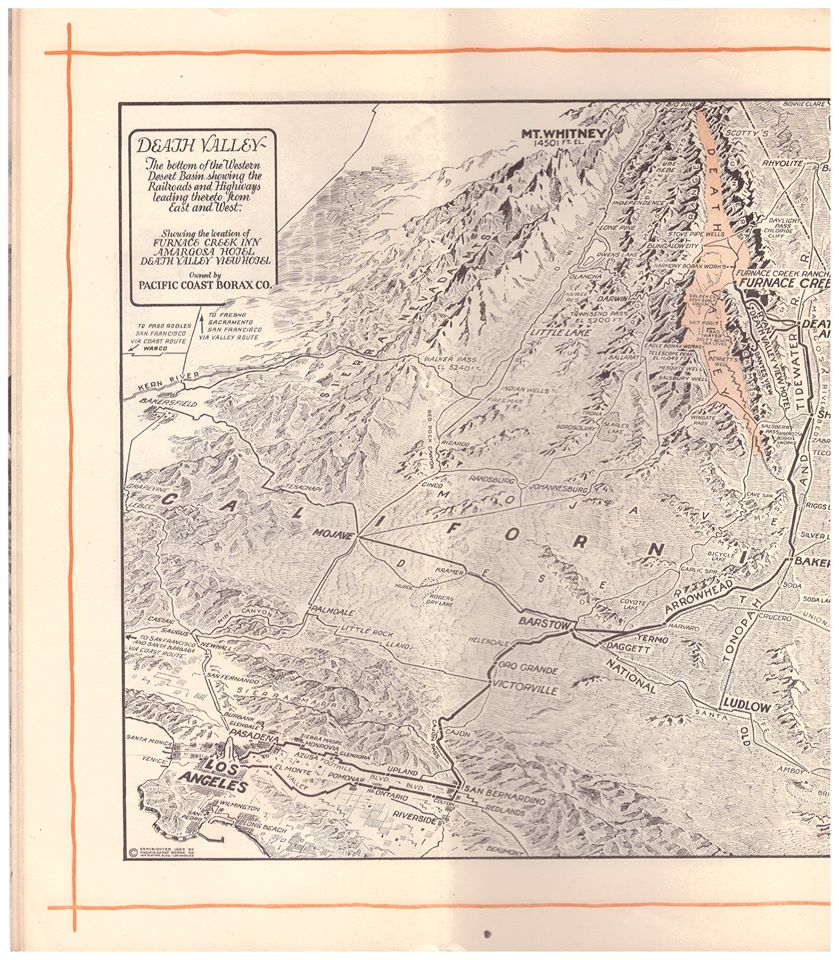
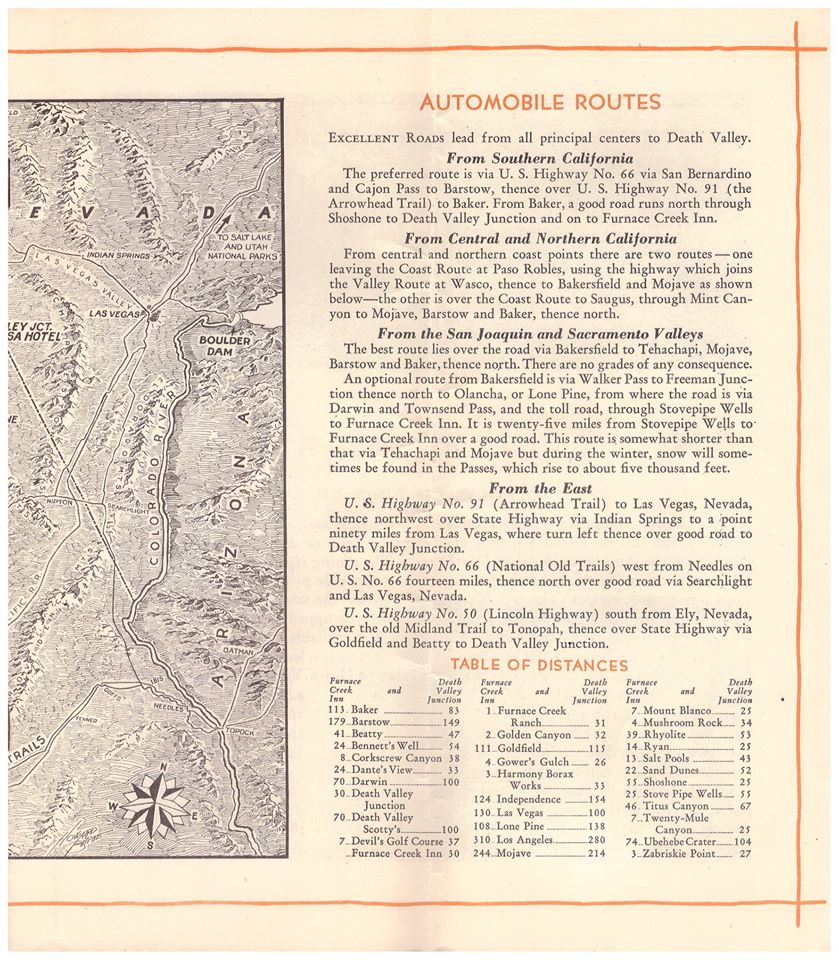

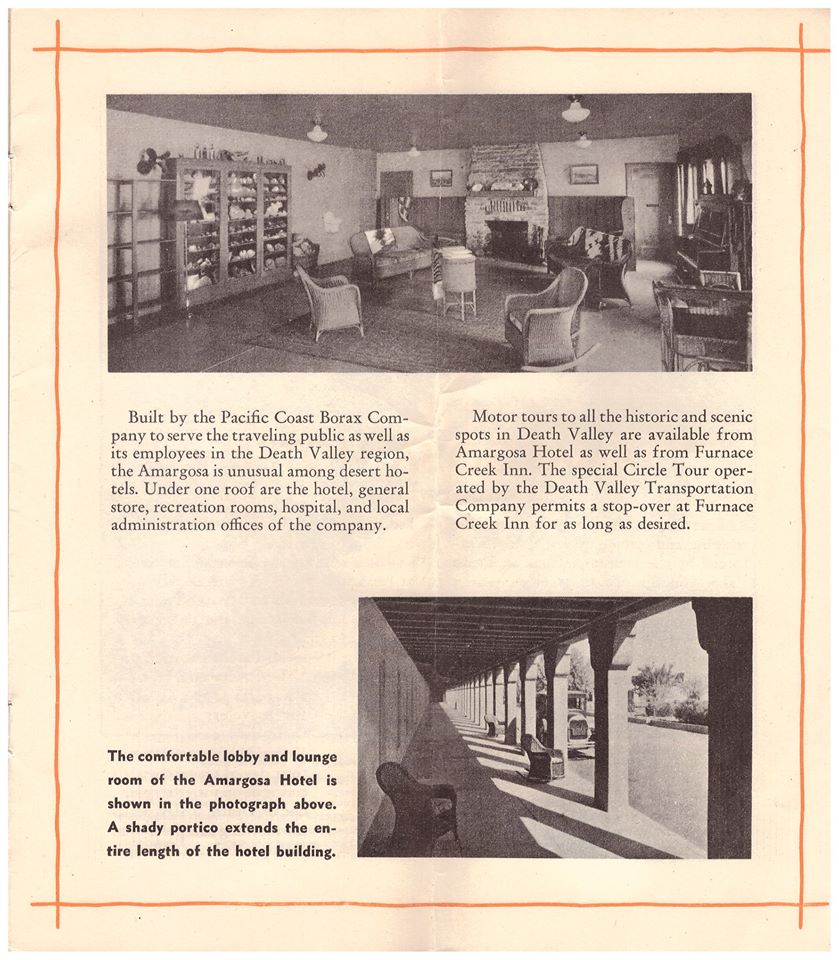
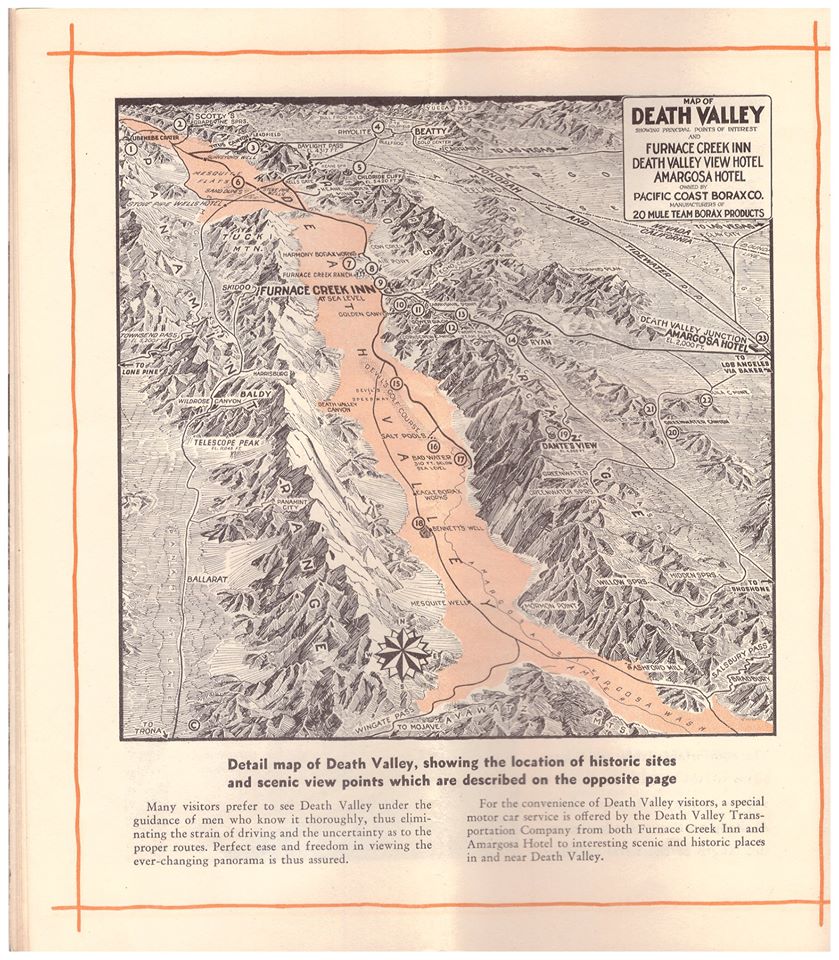

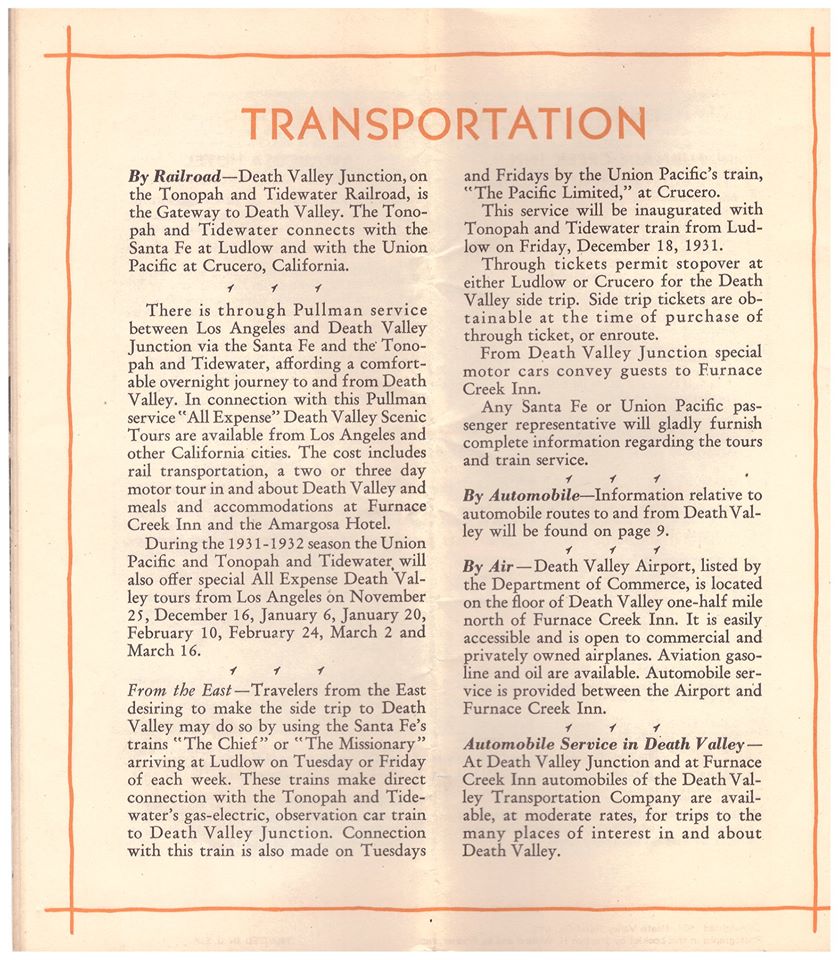
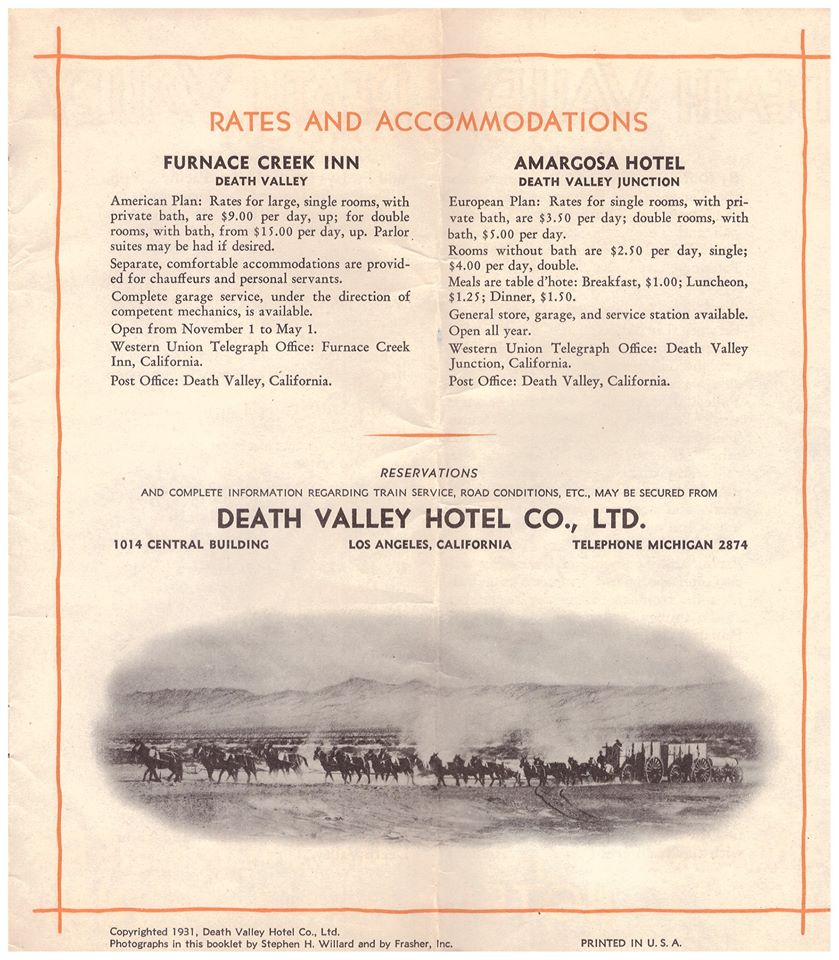
Antelope Valley, Leona Valley, Cajon Pass, San Gabriel, Wolfskill, Nadeau (see OAC)
| These images were part of a set taken by Los Angeles historian and amateur photographer George W. Hazard (1842-1914), during his years traveling throughout Southern California photographing locations of local historical significance. – Courtesy Huntington Library |
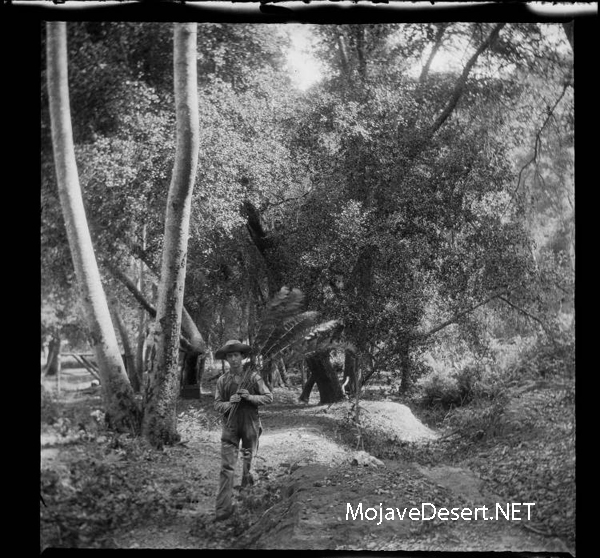
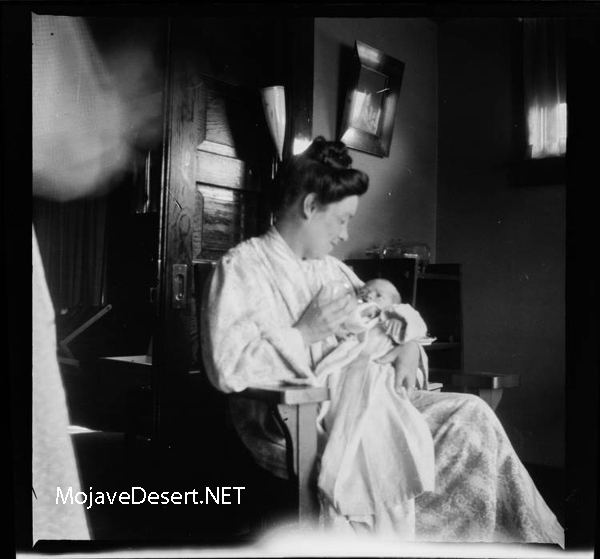
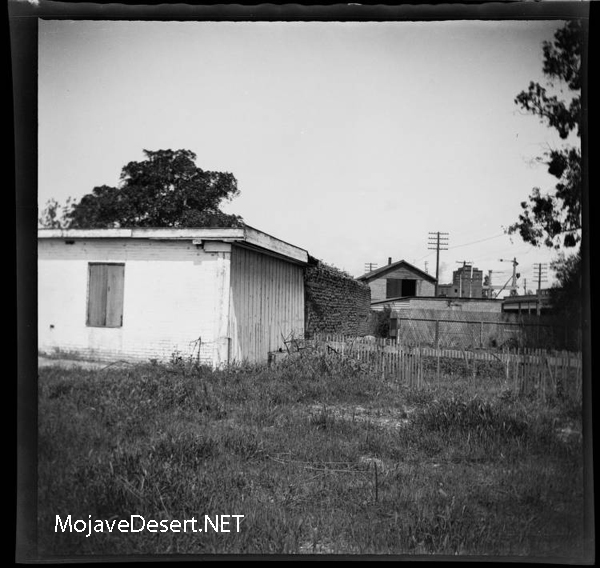
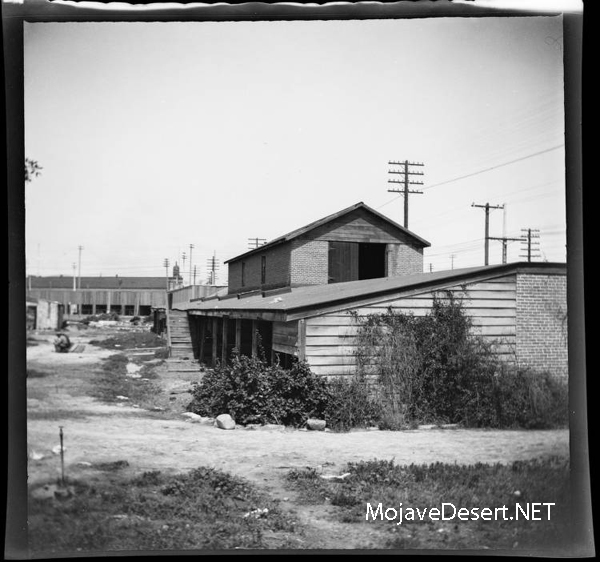

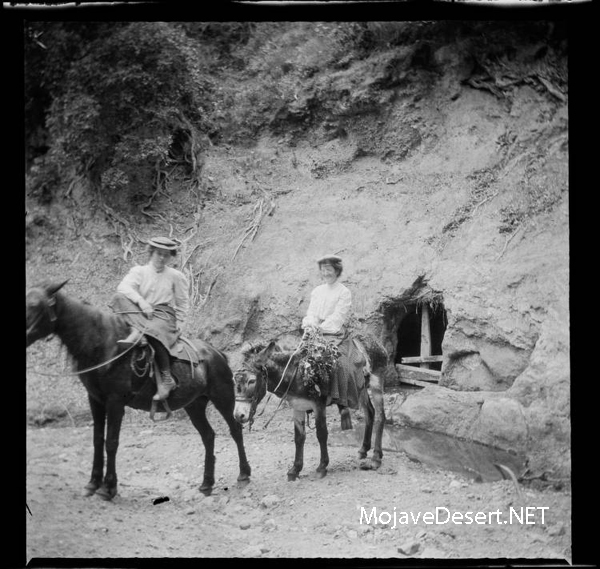
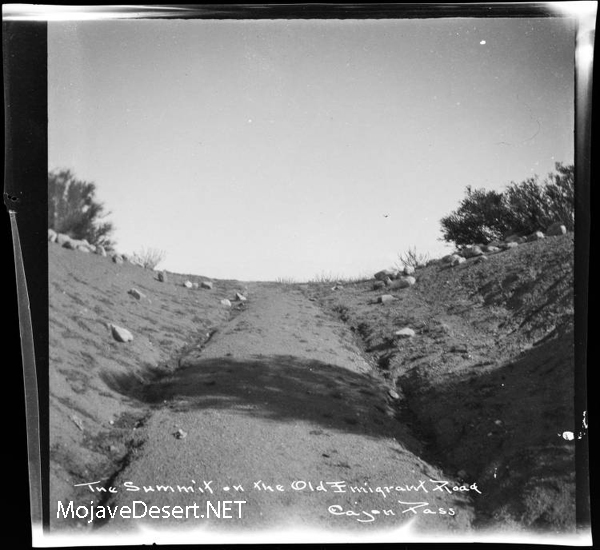
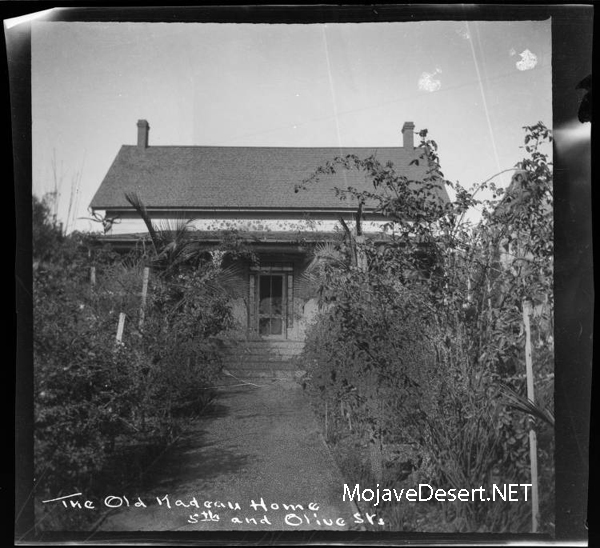
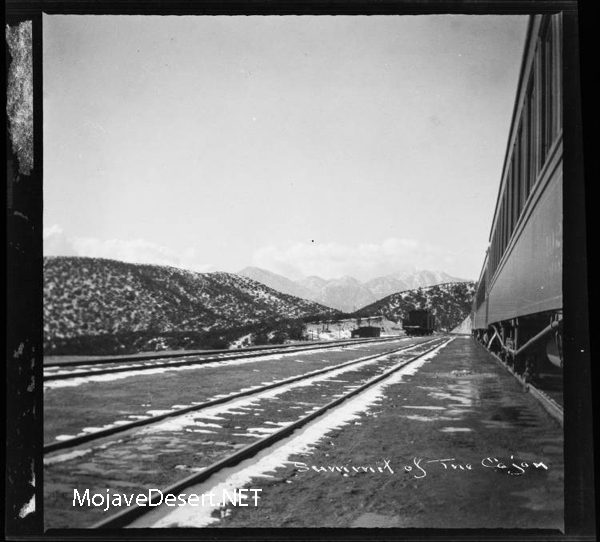
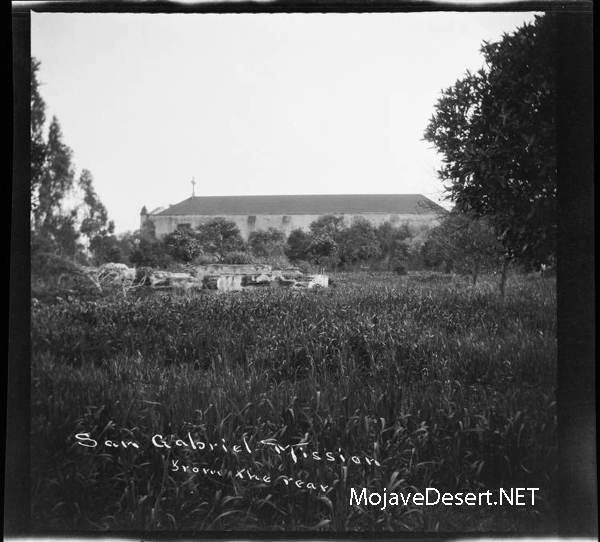

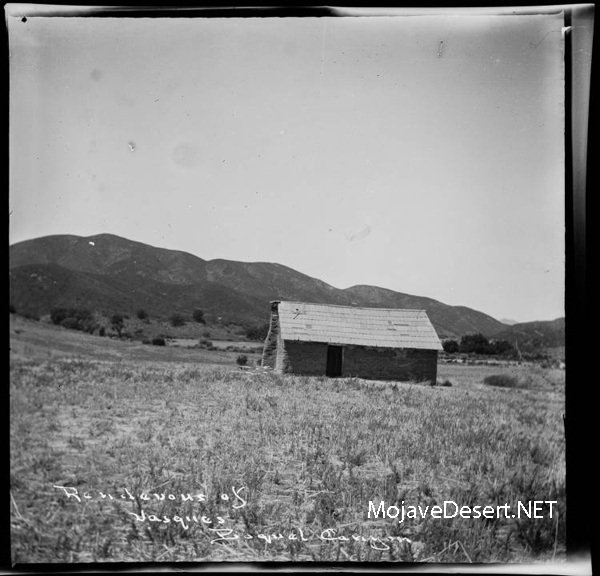
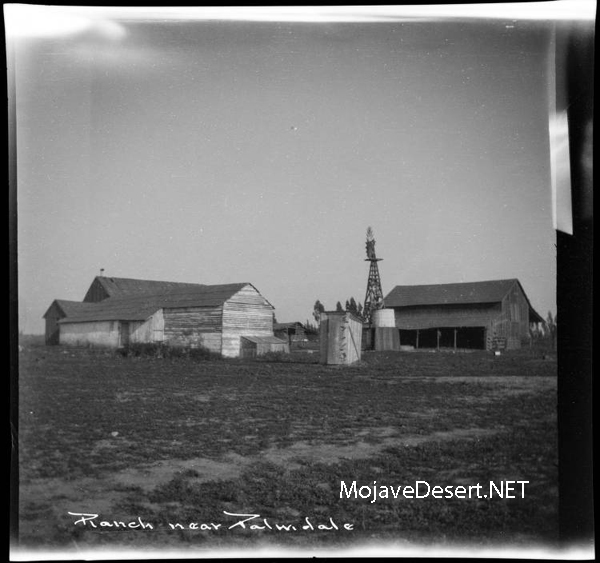
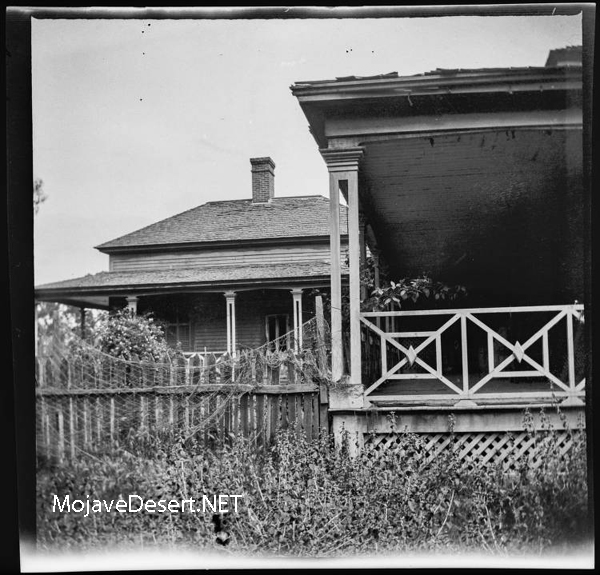
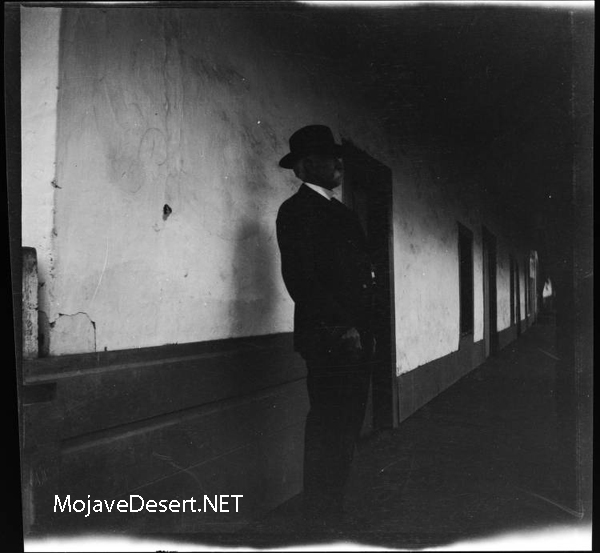
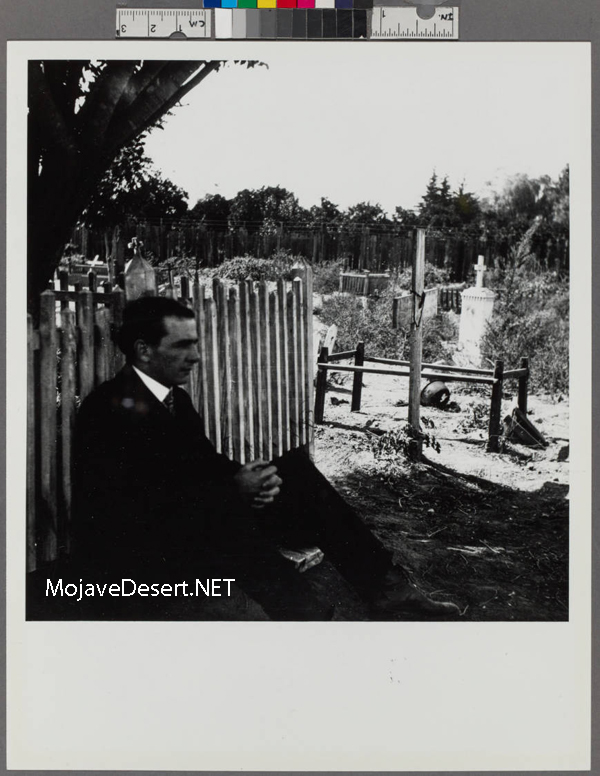
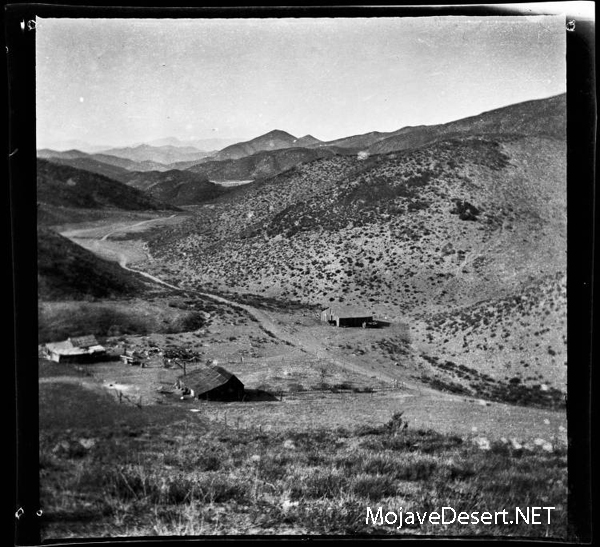

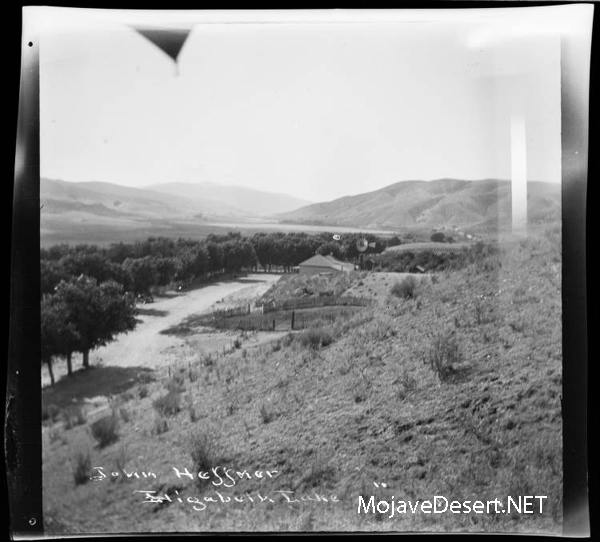

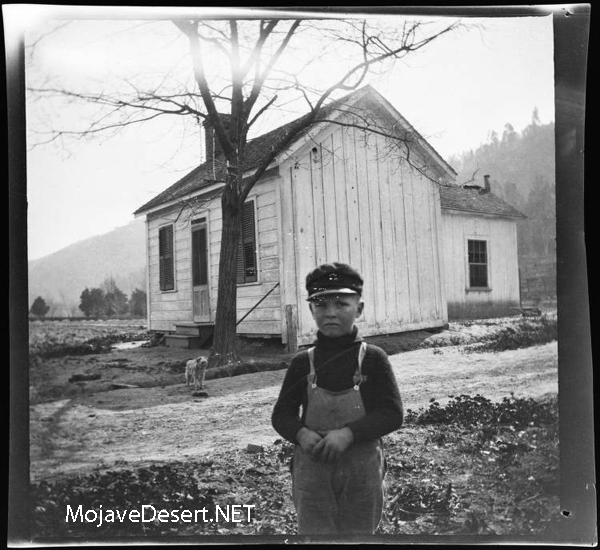
Borax mining in the United States started with the production of borax from Borax lake in Tehama County in 1864. The discovery of cotton ball ulexite in the playa of Teel’s Marsh by Frances Marion (Borax) Smith in 1872 ushered in the first major production of Borax in the United States. The center of cotton ball production then moved to Death Valley in 1880. The most famous operation was the Harmony borax works run by William Tell Coleman. This is the operation that becomes associated with the twenty-mule team wagons. With the discovery of colemanite, the Playa period started to decline.
The mines at Borate ushered in the Colemanite period of borax production. W. T. Coleman initiated the mining operations at Borate in 1884, but actual production did not commence until 1890. Several factors contributed to this delay. The first was the obvious need to provide transportation to the area and develop the mines. The second was the bankruptcy of the “House of Coleman.” In 1890 Borax Smith acquired the property from Coleman’s creditors. He then formed the Pacific Coast Borax Company and commenced shipping ore to the recently updated refinery in Alameda, California.
The two major problems plaguing production at Borate were the transportation and concentration of the ore. Initially, the ore was hand sorted at the mine and hauled to Daggett using the 20 mule teams and wagons once used in Death Valley. Smith was unhappy with this method, so in 1894 he experimented with a steam tractor locally called “Old Dinah.” Unfortunately, this experiment was a failure due to the nature of the road from the mines to Daggett. A narrow gauge railroad was then constructed in 1898 allowing the unprocessed ore to be shipped to a Calcining plant located at Marion, just North of Daggett. The ore was heated until the colemanite decrepitated and could be separated from the gangue. This allowed a better grade of ore to be shipped to Alameda and solved both problems.
By 1907 it was obvious to Smith that the days of Borate were numbered and the main operations were shifted to the Lila C mine at old Ryan, near Death Valley. All of the equipment, including the buildings, were removed and sent to the Lila C, leaving Borate completely bare. The Lila C lasted for only seven years and colemanite mining shifted to various mines in the Death Valley region. In 1927 the mines at Boron opened ushering in the Kernite period. Lessees and small miners continued operations at Borate until the opening of the mines at Boron.
text: http://wikimapia.org/1783734/Borate-CA-site
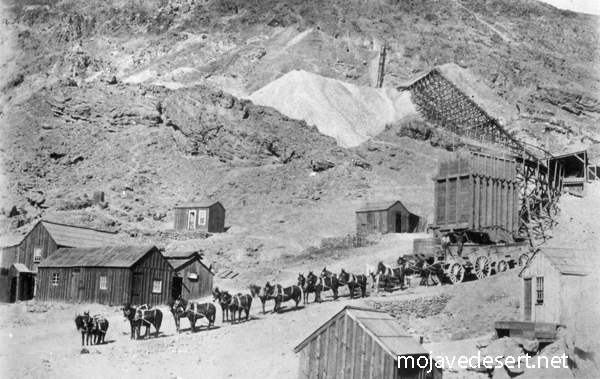


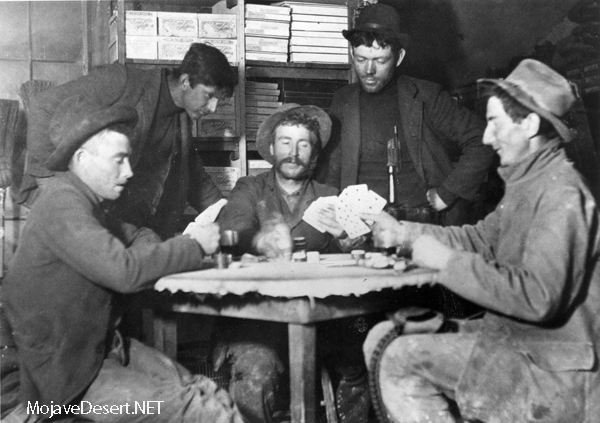


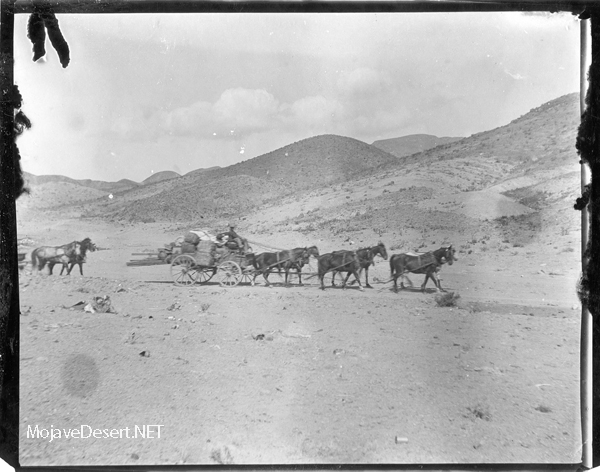

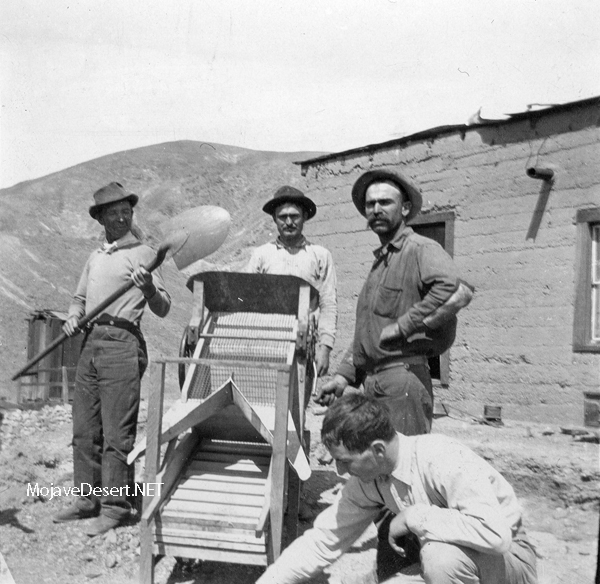
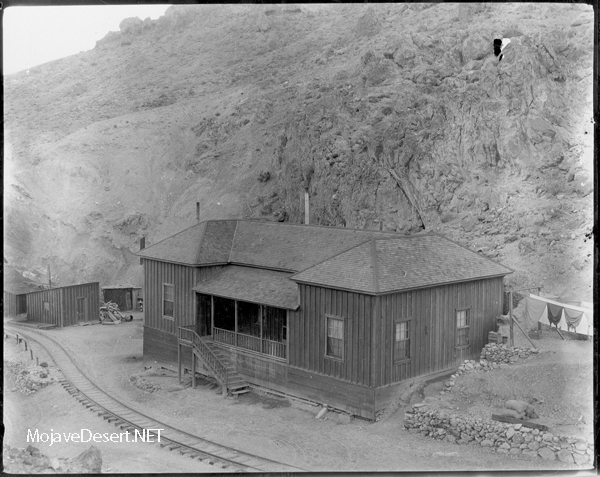

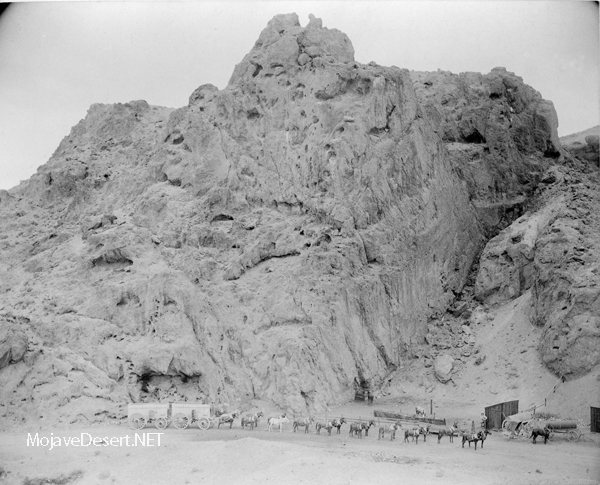
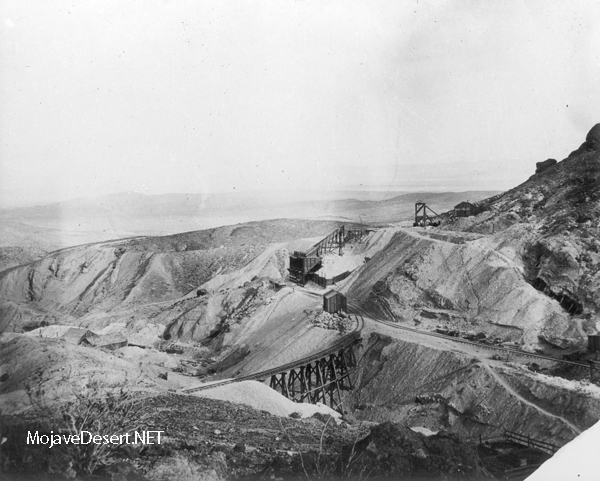
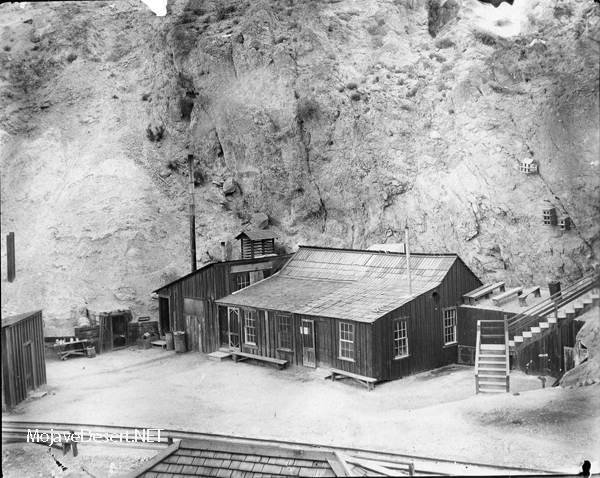
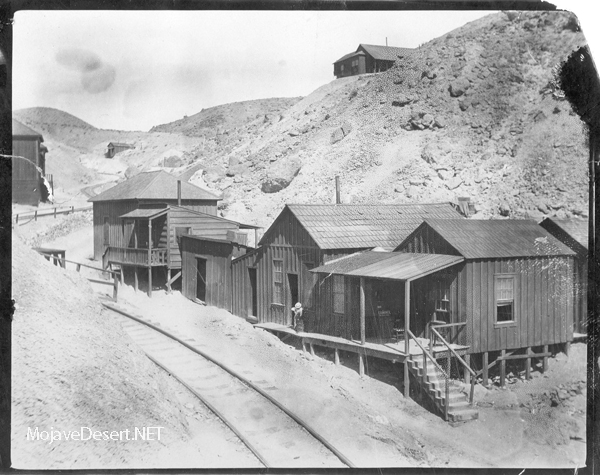
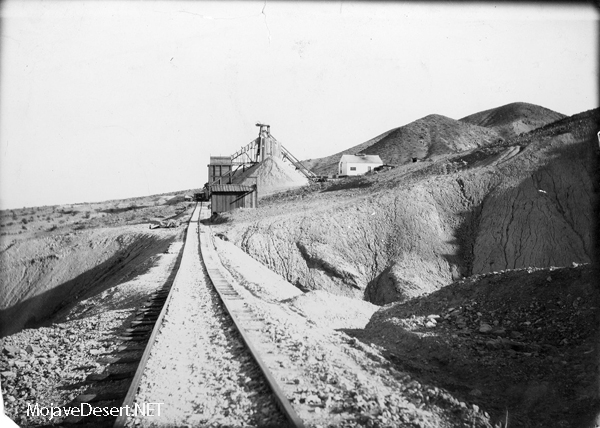
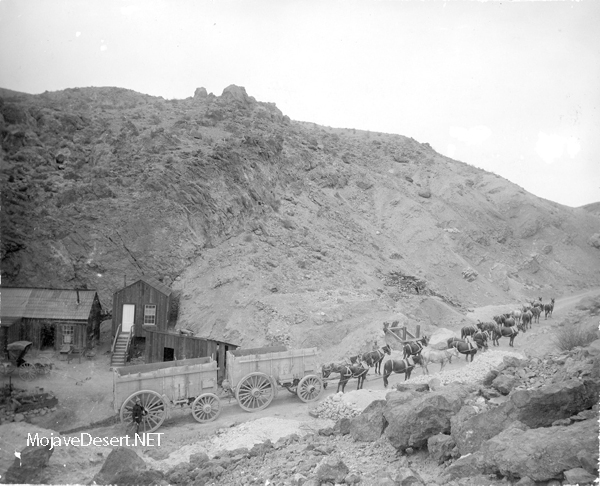


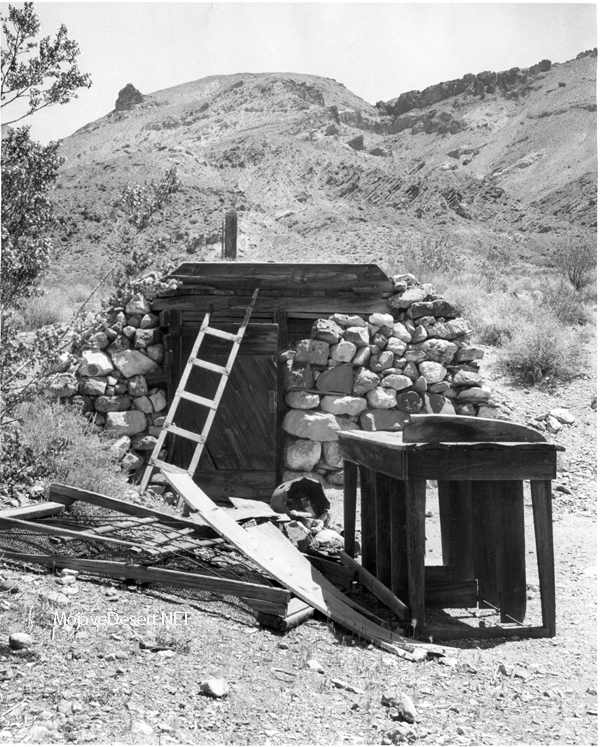

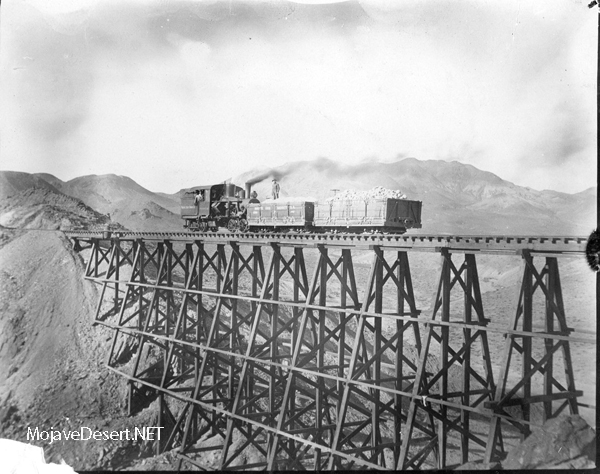



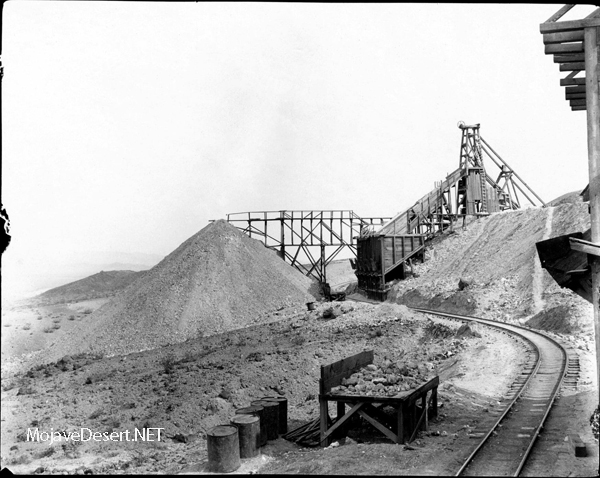
Keep on Steppin’ — The man who walked 481 miles to see a sick friend
. . . At our home he [Shorty Harris] lay on his back for weeks, fed with a spoon. Always talking of putting another town on the map. Always losing a million dollars a day. He was miraculously but slowly recovering when an Associated Press dispatch bearing a Lone Pine date made front page headlines with an announcement of his death.
Though the report was quickly corrected, his presence at our house brought reporters, photographers, old friends, and the merely curious. At the time the Pacific Coast Borax Company’s N.B.C. program was featuring stories based on his experiences over a nation-wide hook-up. Among the callers also were moguls of mining and tycoons of industry who had stopped at the Ballarat cabin to fall under the spell of his ever ready yarns.

Among these guests, one stands out.
It was a hot summer day when I saw on the lawn what appeared to be a big bear, because the squat, bulky figure was enclosed in fur. Answering the door bell I looked into twinkling eyes and an ingratiating smile. “They told me in Ballarat that Shorty Harris was here.” I invited him in.
“I’ll just shed this coat,” he said, stripping off the bearskin garment. “… sorta heavy for a man going on 80.” He laid it aside. “It’s double lined. Fur inside and out. You see, I sleep in it. Crossed three mountain ranges in that coat before I got here. May as well take this other one off too.” He removed another heavy overcoat, revealing a cord around his waist. “Keep this one tied close. Less bulky….”
Under a shorter coat was a heavy woolen shirt and his overalls concealed two pairs of pants. He went on: “I was with Shorty at Leadville. My name’s Pete Harmon. We ought to be rich—both of us. Why, I sold a hole for $2500 in 1878. Thought I was smart. They’ve got over $100,000,000 outa that hole. I was at Bridgeport when I heard Shorty was sick, so I says, ‘I’ll just step down to Ballarat and see him.’ (The ‘step’ was 298 miles.) When I got there Bob Warnack tells me he’s in Los Angeles. When I get there they tell me he’s with you. So I just stepped out here.”
He had “stepped” 481 miles to see his friend.
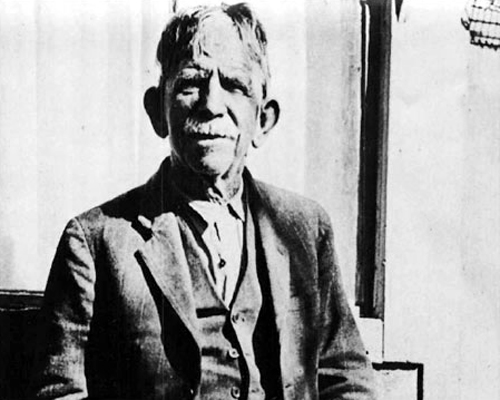
I ushered him in and left them alone. After an hour I noticed Pete outside, smoking. I went out and urged him to return and smoke inside, but he refused. “It’s not manners,” he insisted.
Later I happened to look out the window and saw him empty the contents of a small canvas sack into his hand. There were a few dimes and nickels and two bills. He unfolded the currency. One was a twenty. The other, a one. He put the coins in the sack and came inside. A few moments later, from an adjacent room I heard his soft, lowered voice: “Shorty, I’m eatin’ reg’lar now and got a little besides. I reckon you’re kinda shy. You take this.”
“No—no, Pete. I’m getting along fine….”
I fancy there was a scurry among the angels to make that credit for Pete Harmon.
Late in the afternoon, Pete donned his coats. “I’d better be going. I’ve got a lotta things on hand. A claim in the Argus. When the money comes in, well—I always said I was going to build a scenic railroad right on the crest of Panamint Range. Best view of Death Valley. It’ll pay. How far is it to San Diego?”
“A hundred and forty miles….”
“Well, since I’m this far along I’ll just step down and see my old partner. Take care of Shorty….” And down the road, he went.
With humility I watched his passage, hoping that the good God would go with him and somehow I felt that of all those with fame and wealth or of high degree who had gone from that house, none had left so much in my heart as Pete.
Adapted from;
Chapter XVII
Shorty Frank Harris
Title: Loafing Along Death Valley Trails
A Personal Narrative of People and Places
Author: William Caruthers
Los Angeles Herald Examiner Photo Collection
Howell, E. Bruce – 1974
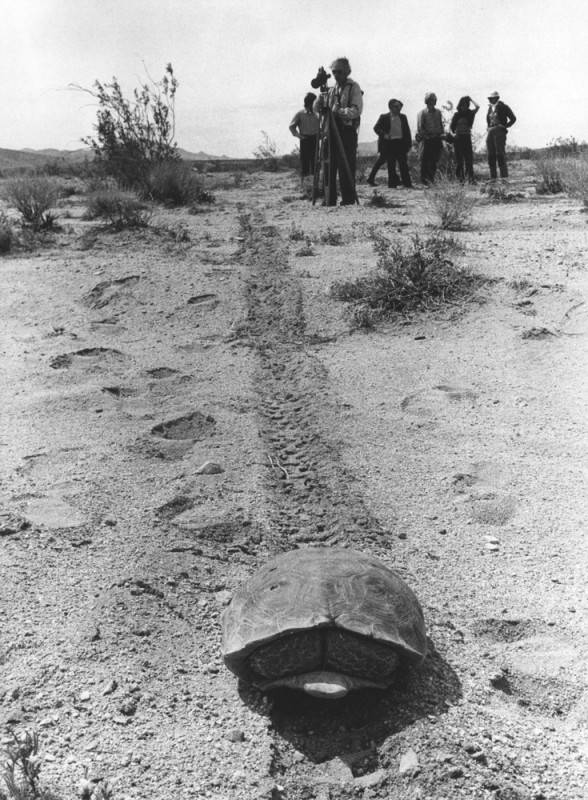
Photograph caption dated April 3, 1974 reads, “Shy desert tortoise curls up inside his shell on top of a groove left in desert sand by motorcycle on the Stoddard Valley off-road vehicle racing area of Barstow. Already legally protected as an endangered species, environmentalists and scientists say the threat is heightened along with other desert life by off-road vehicle activities.”
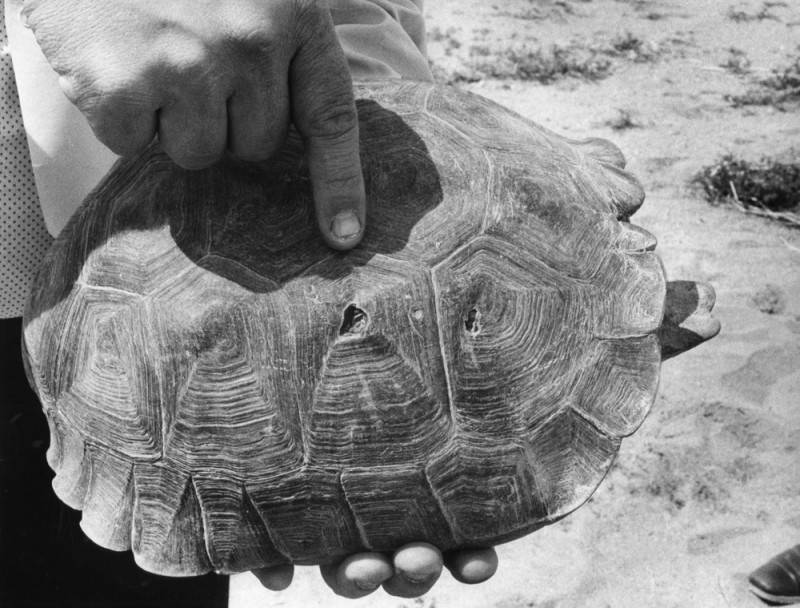
Photograph caption dated April 3, 1974 reads, “Environmentalist group that recently toured the Mojave Desert to show evidence of damage done by indiscriminate use of off-road vehicle say they believe holes on this live desert tortoise shell were caused by bullets.”
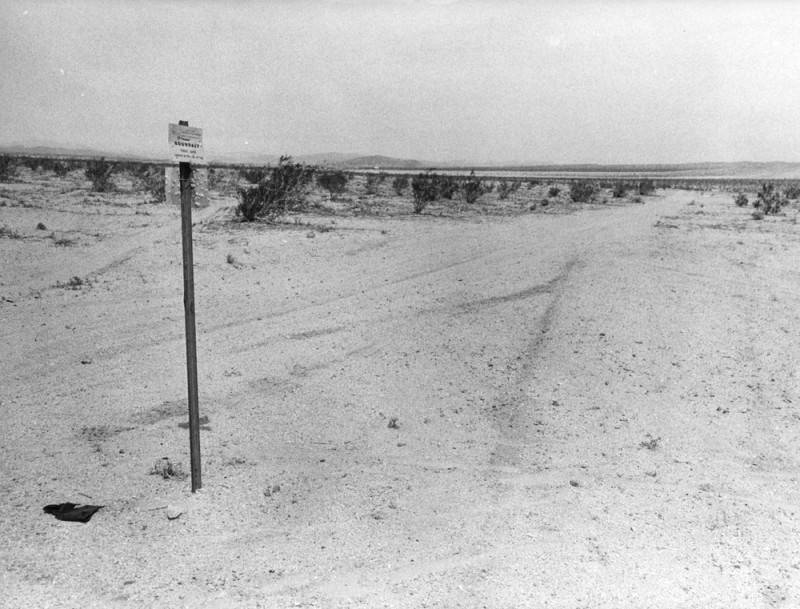
Photograph caption dated April 3, 1974 reads, “Tiny marker planted in Mojave Desert at Stoddard Valley, marks U.S. Bureau of Land Management boundary separating approved off-road vehicle race course from a restricted area. Heavy tire tracks on both sides of marker indicate that such markers are virtually ignored, except by desert visitors with guns, who have riddled them with bullets.”
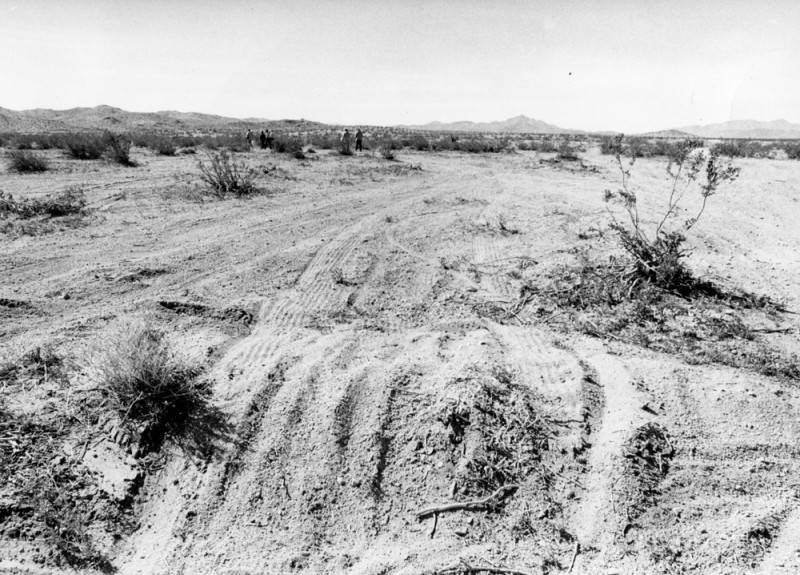
Photograph caption dated April 3, 1974 reads, “Stoddard Valley on Mojave Desert near Barstow, despite its vast openness is a continuous maze of off-road vehicle tire tracks. Federal plan for managing off-road vehicle use on desert has left it open for off-road vehicle races and closed other areas. But environmentalists and scientists say regulations for restricted areas are too vague and open to this kind of damage.”
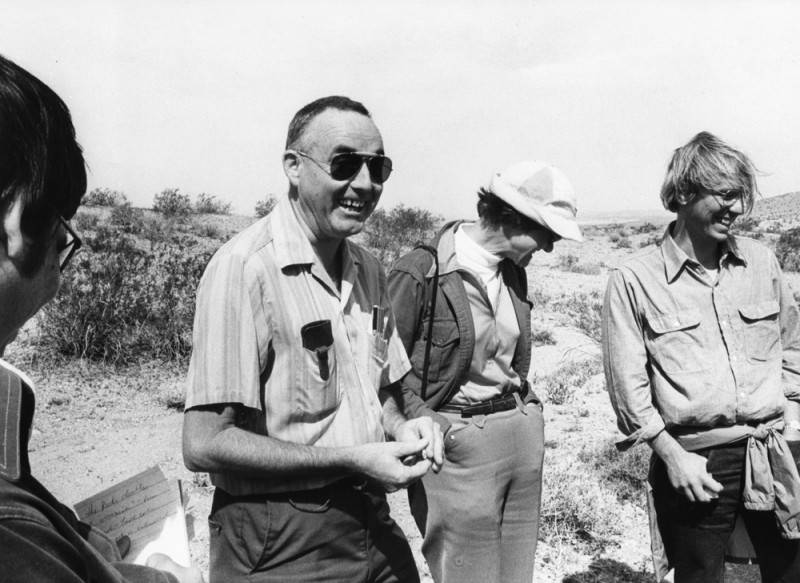
Photograph caption dated April 3, 1974 reads, “These people seek to defend the vast Mojave Desert from a federal program that regulates off-road vehicles. They claim regulations are vague, unenforceable, and could open the desert to extensive off-road vehicle damage. From left are UC Riverside professors Bill Mayhew, zoology; Sylvia Broadbent, anthropology; and Richard E. Gutting, Jr., attorney for Environmental Defense Fund.”

Photograph caption dated April 3, 1974 reads, “Judith Winder, staffer for Environmental Defense Fund, sketches petroglyph of longhorn sheep from rock in Inscription Canyon.”

Photograph caption dated April 3, 1974 reads, “Hand of UC Riverside anthropology professor, Sylvia Broadbent, points out recent chisel mark at bottom of a chipped out section of volcanic rock which had an ancient Indian carving on it. Such damage to antiquities, which is widespread in the Mojave Desert is illegal. This damage was in Inscription Canyon near Barstow.”
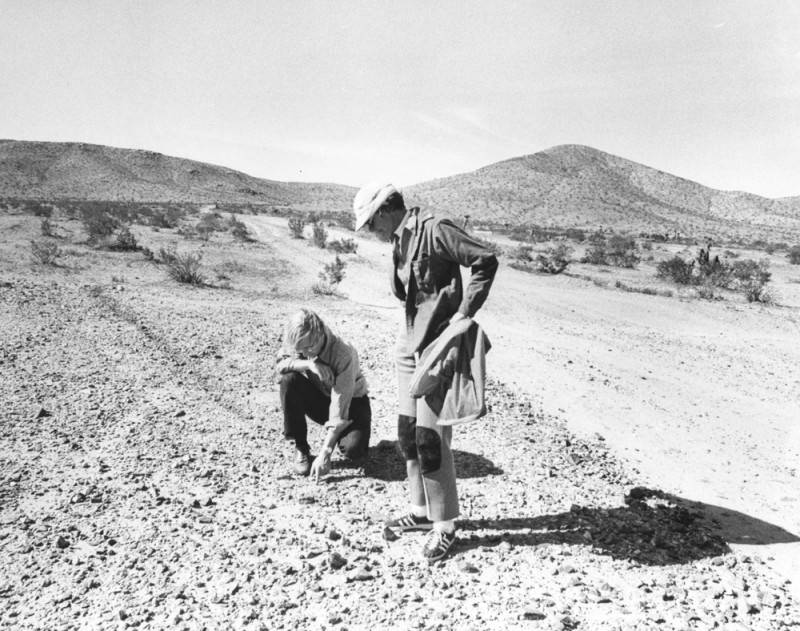
Photograph caption dated April 3, 1974 reads, “Richard E. Gutting, Jr., kneeling, attorney for Environmental Defense Fund, and UC Riverside anthropology professor Sylvia Broadbent, examine off-road vehicle dislocation of ‘desert pavement,’ a dark, rocky covering on desert floor which takes thousands of years to form but is important to the natural balance of desert life. Light swath was made by off-road vehicle race.”
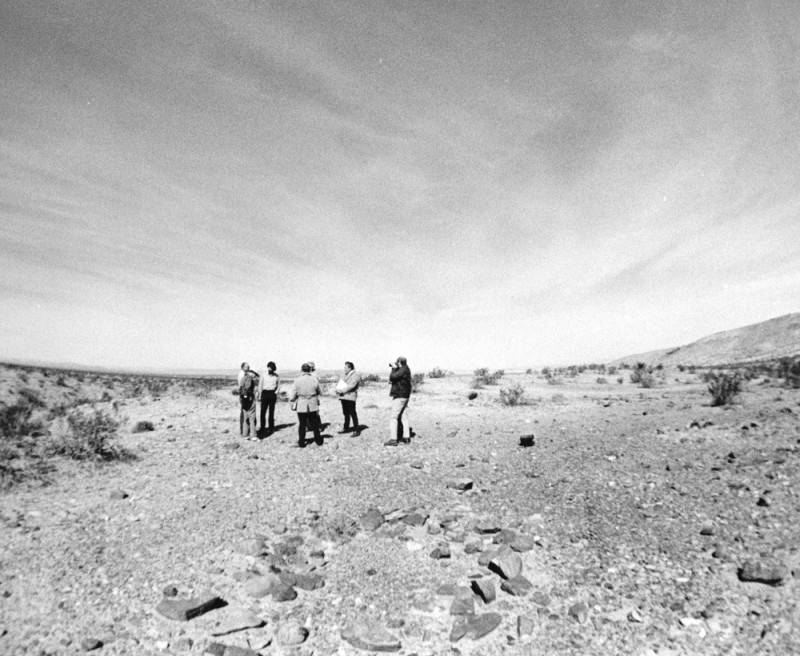
Photograph caption dated April 3, 1974 reads, “Off-road vehicle race course touring party gathers at scene of ancient Indian sleeping circle (foreground), a circular formation of larger rocks in midst of small ones, which anthropologists say were foundations for shelters built by prehistoric Indians. All such sites, they assert, should be protected.”
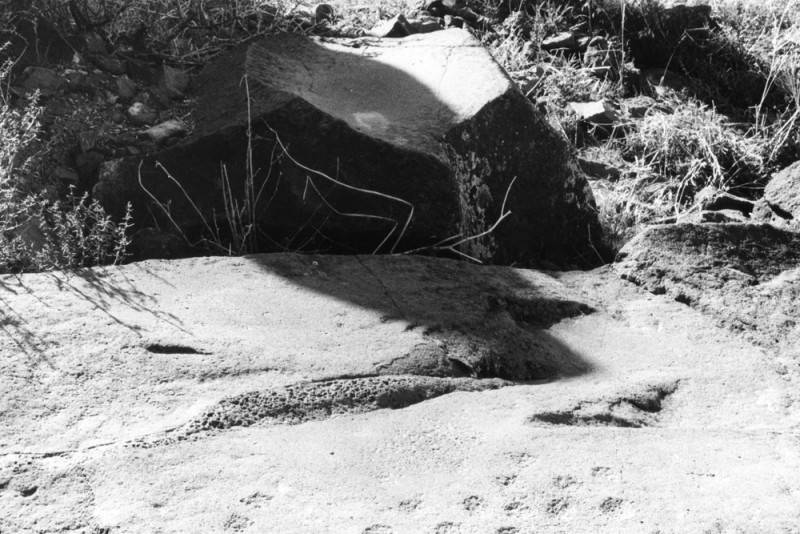
Photograph caption dated April 3, 1974 reads, “Not just ordinary boulders, these, according to Dr. Sylvia Broadbent, UC Riverside anthropology professor, who said there is no question that the slightly concave rock in the upper half of photo was worn that way by ancient Indians grinding grain and marks on the surface of the rock in the lower photo were also made by the same Indians.”

Photograph caption dated April 3, 1974 reads, “Petroglyphs, ancient Indian rock art, abound on the walls of Inscription Canyon near Barstow. Archaeologists look upon them as valuable keys to unlocking the secrets of prehistoric peoples who inhabited the vast Mojave Desert, but complain they are being destroyed by desert visitors at an alarming rate.”
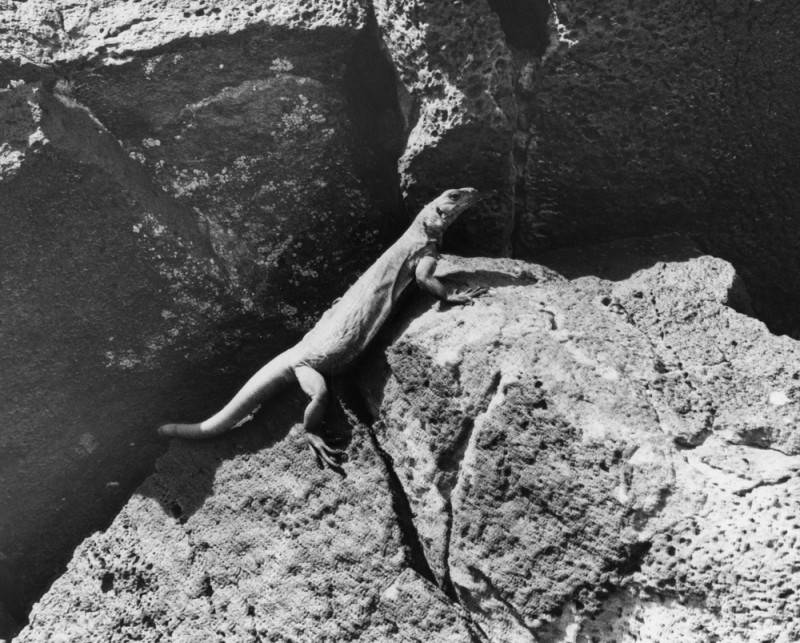
Photograph caption dated April 3, 1974 reads, “He calls the Mojave Desert ‘home.’ Desert lizard suns itself on dark, porous volcanic rock in Inscription Canyon. Same rocks are covered with ancient Indian petroglyphs, and rock art carvings, indicating the canyon may have been where Indians trapped and captured longhorn sheep and other desert game. The entire canyon is falling victim to vandals and souvenir hunters.”
Cajon Pass/Victor Valley Roads

1 – Old Spanish Trail/Indian trail (1827)
2 – Cajon Pass (Lower) – Indian trail
3 – Lone Pine Canyon – Indian trail
4 – Sheep Creek – Indian trail
5 – Sanford Pass (c.1854-57)
6 – Fort Tejon – Indian trail
7 – to Mojave River – Indian trail
8 – to Daggett (c.1855)
9 – Lucerne/Cushenbury Lumber road
10 – Van Dusen/Holcomb Valley Road – (1862)
11 – Mojave Indian trail (c.1776, 1826)